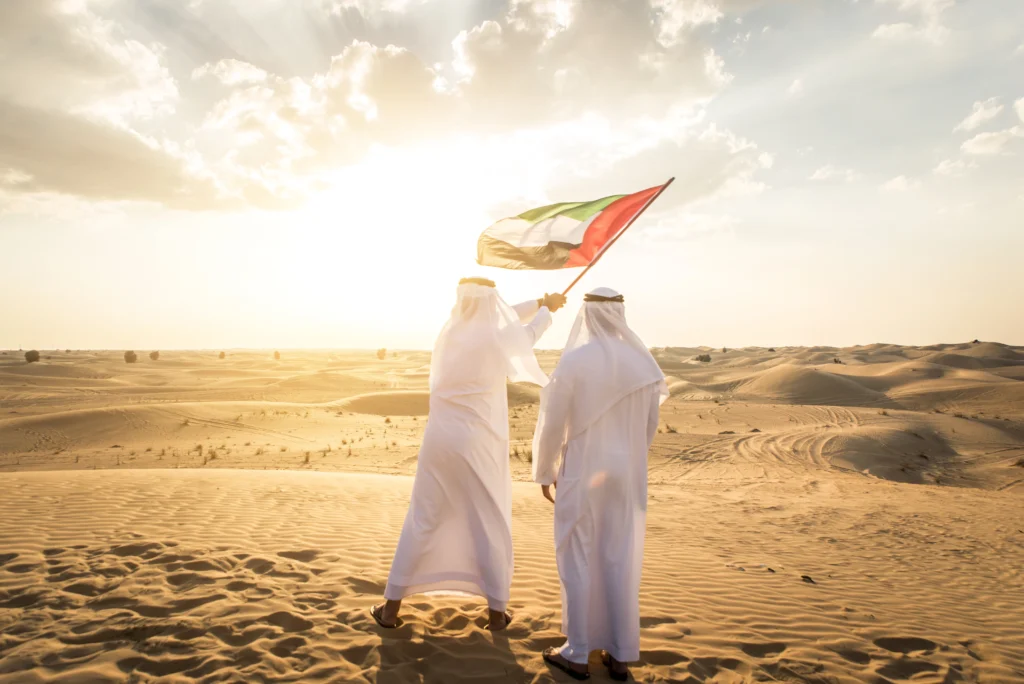The United Arab Emirates (UAE) has a rich and diverse history that spans millennia, making it one of the most fascinating regions in the Middle East. While today it is known for its futuristic skyline, wealth, and innovation, the country’s past is deeply rooted in the culture of the Bedouin people, ancient trade routes, and the pearl diving industry. The formation of the UAE as we know it today is relatively recent, yet the region has a long legacy of heritage and resilience.
Ancient Civilizations and Early Settlements
Long before the modern cities of Dubai and Abu Dhabi existed, the area that constitutes the UAE was home to ancient civilizations. Archaeological discoveries have uncovered evidence of human habitation dating back more than 125,000 years. Early settlers, drawn to the region for its access to water and resources, established trade routes connecting the Arabian Peninsula with Mesopotamia, Persia, and the Indus Valley.
During the Bronze Age, the Hafit and Umm Al Nar cultures flourished, leaving behind tombs and artifacts that give insight into their way of life. These civilizations were skilled in metallurgy and traded copper, which was abundant in the region, with neighboring civilizations. The UAE’s early history is marked by its role as a vital center for trade, which would continue to define the region in the centuries to come.
The Rise of Islam and the Influence of Empires
In the 7th century, Islam spread rapidly across the Arabian Peninsula, bringing with it a new era of cultural and religious unity. The region that is now the UAE quickly adopted the Islamic faith, which continues to shape its social, political, and cultural landscape to this day.
Throughout the following centuries, the area was influenced by various empires, including the Umayyads, Abbasids, and Ottoman Empire. Each left its mark, contributing to the rich tapestry of UAE history. The strategic location of the Emirates on the Arabian Gulf made it a valuable asset for controlling trade routes between the East and the West.
The Importance of Pearl Diving
Before the discovery of oil, the UAE’s economy was largely dependent on pearl diving, fishing, and trade. The pearling industry was at its peak between the 16th and early 20th centuries, with the waters around the Arabian Gulf being known for producing some of the world’s finest pearls.
Pearl divers, often facing dangerous conditions, became renowned for their skills. The industry not only shaped the economy but also fostered the growth of coastal towns, with Abu Dhabi and Dubai serving as major centers for pearl trade. However, the industry declined sharply in the 1930s due to the advent of cultured pearls and the Great Depression, which caused a global economic downturn.
The British Era and the Trucial States
By the 19th century, the region was known as the Pirate Coast due to conflicts with maritime traders. This led to intervention by the British, who sought to protect their interests in India. In 1820, the British signed a series of agreements with local rulers, creating the Trucial States, a group of sheikhdoms along the Gulf coast. The agreements ensured British protection and military support in exchange for peace and cooperation in the region.
During this period, the Trucial States maintained autonomy over their internal affairs but relied heavily on British oversight for defense and foreign policy. The relationship would continue until the mid-20th century, when the winds of change began to blow through the Arabian Peninsula.
The Discovery of Oil and the Birth of the UAE
The discovery of oil in the 1950s was a transformative event that would change the course of the UAE’s history forever. In Abu Dhabi, the first oil exports began in 1962, bringing unprecedented wealth to the region. Dubai, too, discovered oil in 1966, enabling the ruling sheikhs to modernize their cities rapidly.
By the late 1960s, the British announced their intention to withdraw from the Gulf, prompting the rulers of the Trucial States to consider unification. On December 2, 1971, six emirates—Abu Dhabi, Dubai, Sharjah, Ajman, Fujairah, and Umm Al Quwain—came together to form the United Arab Emirates. The seventh emirate, Ras Al Khaimah, joined the federation in early 1972.
This historic unification was led by Sheikh Zayed bin Sultan Al Nahyan, the ruler of Abu Dhabi, who is often regarded as the father of the UAE. His vision and leadership helped guide the nation through its formative years, laying the foundation for the prosperity and success it enjoys today.
Rapid Development and Global Recognition
Since its formation, the UAE has undergone a remarkable transformation, evolving from a small collection of desert towns into a global powerhouse. Fueled by oil revenues, the government embarked on ambitious infrastructure projects, developing modern cities, airports, ports, and tourist attractions that would put the UAE on the world map.
Dubai, in particular, emerged as a global financial and tourism hub, with landmarks like the Burj Khalifa, Palm Jumeirah, and Burj Al Arab becoming iconic symbols of modernity and innovation. Meanwhile, Abu Dhabi has focused on diversifying its economy through investments in renewable energy, culture, and tourism.
The UAE has also gained international recognition for its diplomatic efforts, becoming a key player in regional and global politics. The country has fostered strong relationships with both Western and Eastern nations, leveraging its strategic location to become a center for trade, commerce, and diplomacy.
Emirati Culture: A Blend of Tradition and Modernity
While the UAE’s cities are synonymous with luxury and modernity, the country remains deeply connected to its cultural roots. Bedouin traditions, such as falconry, camel racing, and poetry, continue to play an important role in Emirati society.
The UAE is also home to a wealth of cultural landmarks, including the Sheikh Zayed Grand Mosque, the Dubai Museum, and the Louvre Abu Dhabi, which showcase the country’s rich history and commitment to preserving its heritage. Festivals and celebrations, such as National Day and the Dubai Shopping Festival, further highlight the blend of tradition and innovation that defines the UAE.
Conclusion: A Nation Shaped by History
The history of the UAE is one of resilience, innovation, and unity. From its ancient civilizations and Bedouin heritage to its meteoric rise as a global powerhouse, the UAE’s story is a testament to the strength and vision of its people and leaders.
Today, the UAE stands as a symbol of progress, cultural preservation, and ambition, continually shaping the future while honoring its past. As the country looks toward the future, its history remains a vital part of its identity, guiding its path forward.



One thought on “The Rich History of the United Arab Emirates: A Journey Through Time”